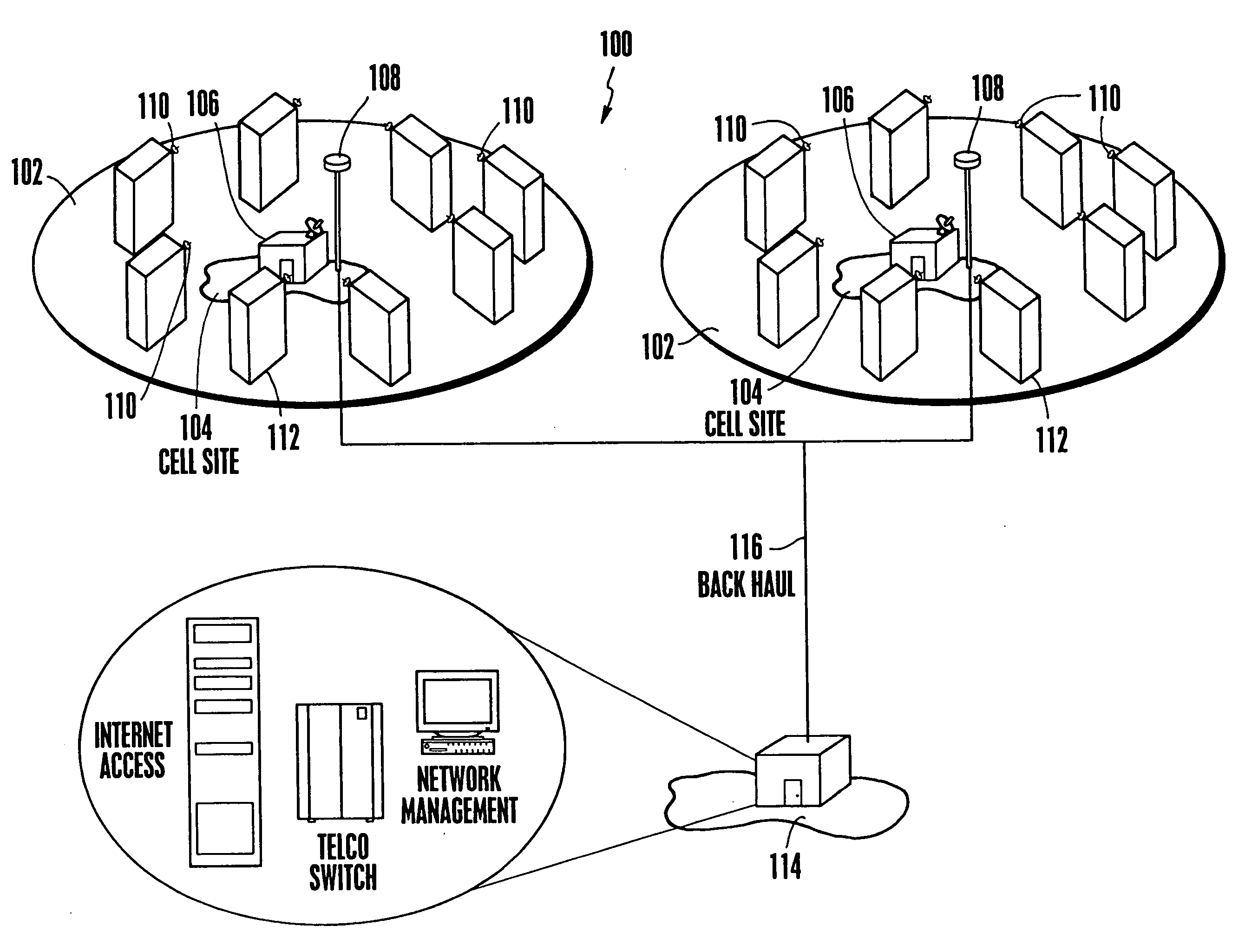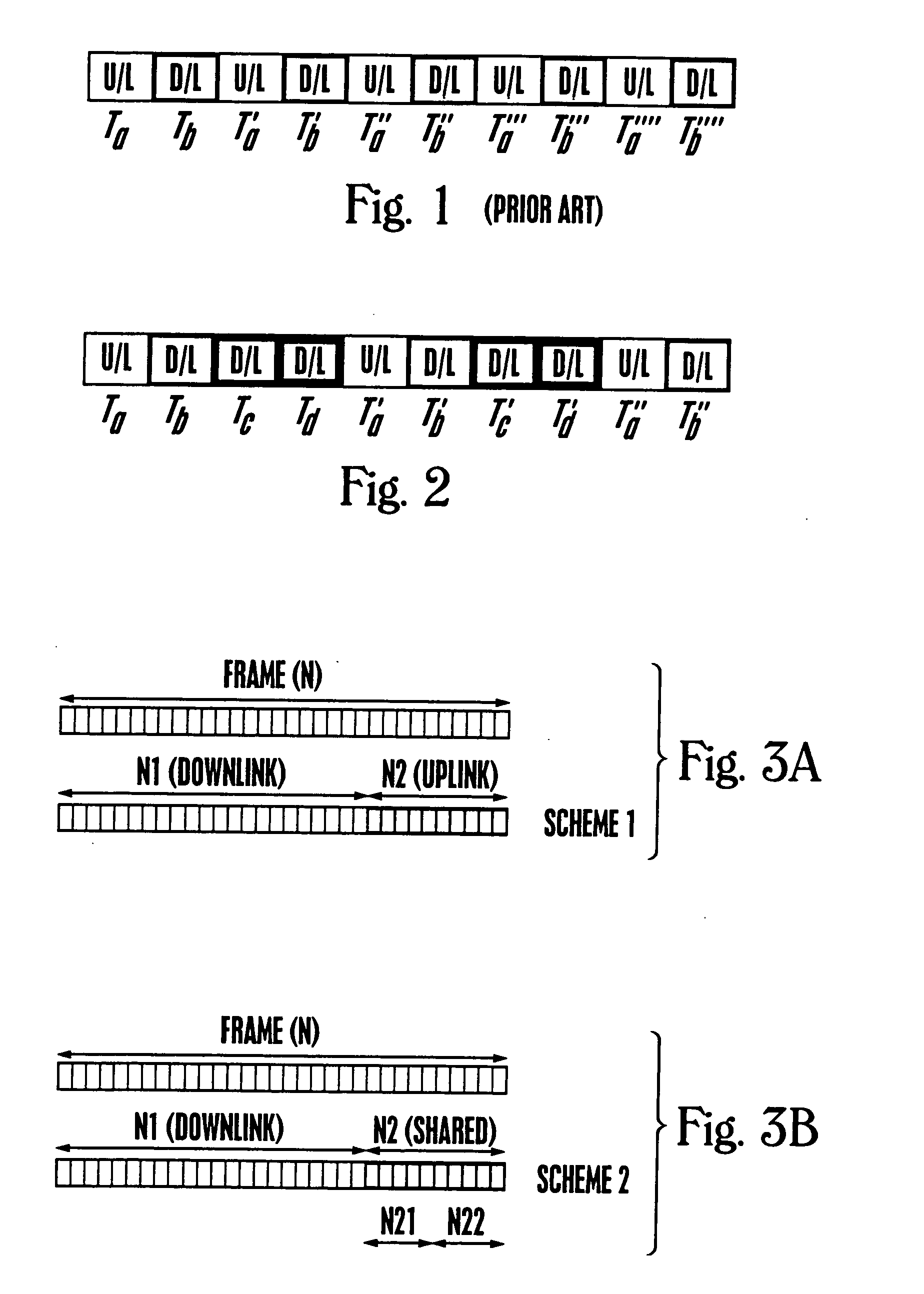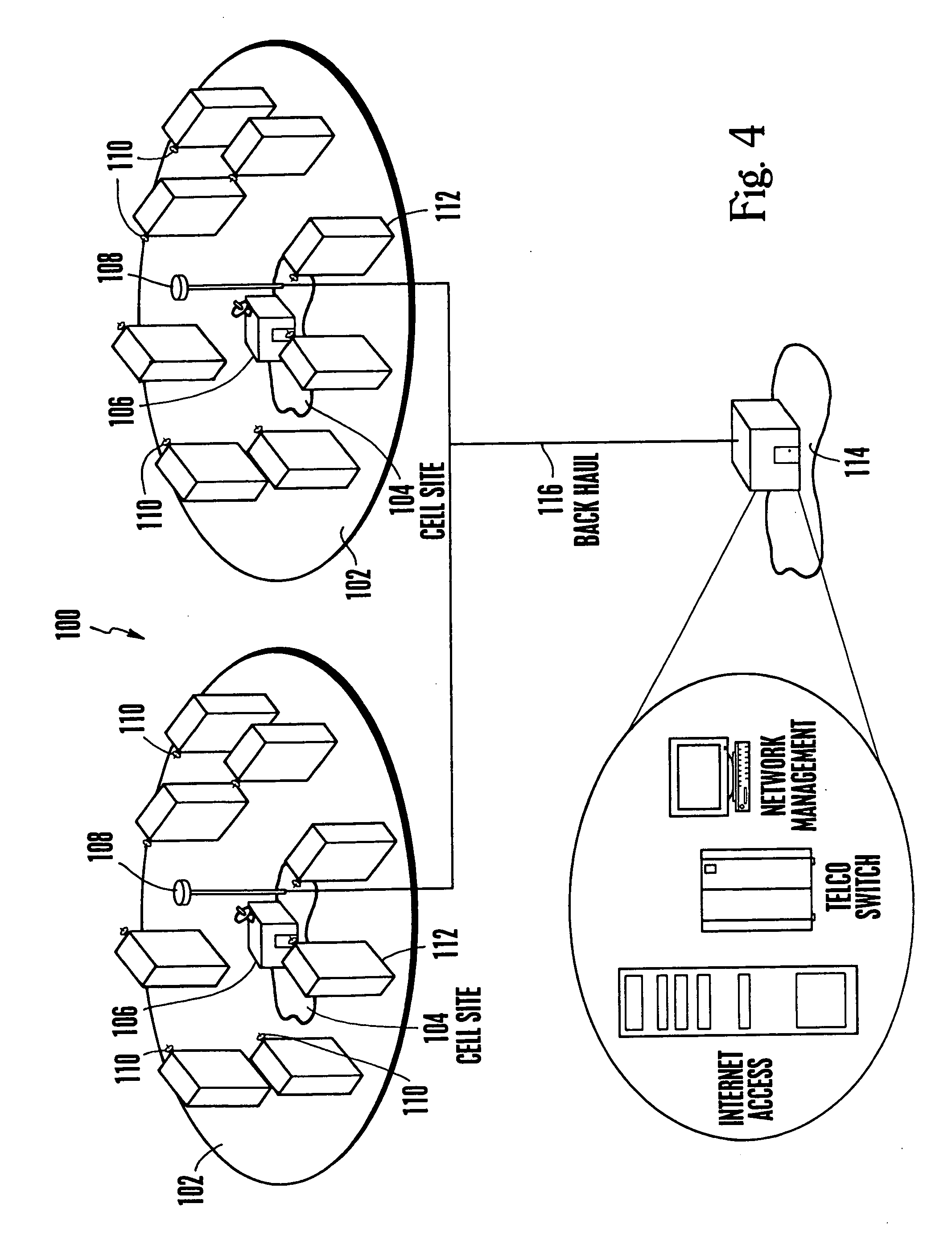Adaptive time division duplexing method and apparatus for dynamic bandwidth allocation within a wireless communication system
a wireless communication system and adaptive time division technology, applied in the field of wireless point-to-multipoint voice, data and video (“ broadband”) communication systems, can solve the problems of increasing complexity and costs associated with the subscriber unit, increasing the complexity and cost of the subscriber unit, and fdd systems requiring frequency separation, etc., to facilitate the efficient use of communication channels
- Summary
- Abstract
- Description
- Claims
- Application Information
AI Technical Summary
Benefits of technology
Problems solved by technology
Method used
Image
Examples
Embodiment Construction
[0033] Throughout this description, the preferred embodiment and examples shown should be considered as exemplars, rather than as limitations on the present invention.
[0034] The present invention is an adaptive time division duplexing (ATDD) method and apparatus for duplexing transmissions over a communication link in a wireless communication system. Without significantly altering existing wireless communication systems, the present ATDD invention facilitates the efficient use of communication channels by adapting to the uplink and downlink bandwidth requirements of the channels. The invention is particularly useful in wideband or broadband wireless communication systems, although it may be used with any data communication system where an adaptive and flexible time division duplexing transmission scheme is desirable or necessary.
[0035] As described above, the typical TDD system uses a symmetric allocation of uplink and downlink transmissions. FIG. 1 is a timing diagram showing equ...
PUM
 Login to View More
Login to View More Abstract
Description
Claims
Application Information
 Login to View More
Login to View More - R&D
- Intellectual Property
- Life Sciences
- Materials
- Tech Scout
- Unparalleled Data Quality
- Higher Quality Content
- 60% Fewer Hallucinations
Browse by: Latest US Patents, China's latest patents, Technical Efficacy Thesaurus, Application Domain, Technology Topic, Popular Technical Reports.
© 2025 PatSnap. All rights reserved.Legal|Privacy policy|Modern Slavery Act Transparency Statement|Sitemap|About US| Contact US: help@patsnap.com



